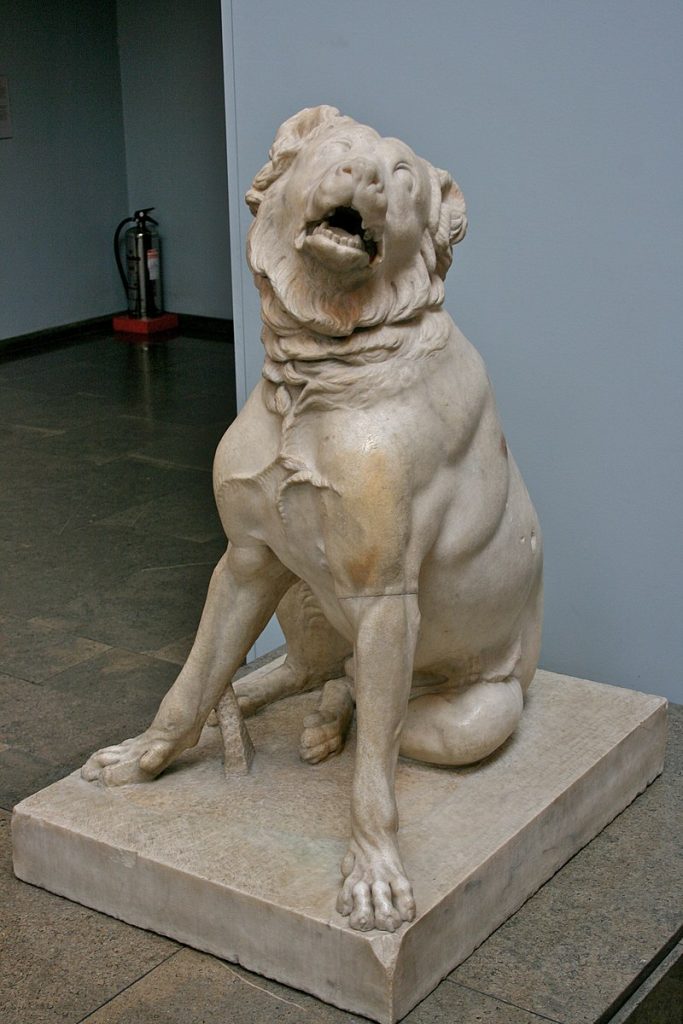Alexander the Great, the Macedonian conqueror who built one of the largest empires in ancient history, is renowned not only for his military prowess but also for his deep bonds with his companions—both human and animal. Among these, his horse Bucephalus is famous, but less known is his faithful dog, Peritas. While much of what we know about Peritas blends history with legend, ancient sources provide glimpses into the life of this remarkable canine who accompanied Alexander on his campaigns. This article explores the known facts, anecdotes, and uncertainties surrounding Peritas, drawing from classical texts and modern interpretations.
Historical Sources and Origins
The primary historical reference to Peritas comes from the Greek biographer Plutarch in his Life of Alexander (Chapter 61). According to Plutarch, Alexander reared Peritas from a puppy, fostering a strong bond that led him to honor the dog posthumously by founding a city in his name. This city was likely established in what is now Pakistan, near the site named after Bucephalus, following Alexander’s victory at the Battle of the Hydaspes against King Porus in 326 BCE. Plutarch cites earlier writers like Sotion and Potamon the Lesbian as his sources, emphasizing the dog’s importance in Alexander’s life.
Other ancient authors, such as Pliny the Elder in his Natural History (Book VIII), describe Alexander receiving large, powerful dogs as gifts from foreign rulers, including the king of Caucasian Albania. These dogs were tested in combats against lions and elephants, showcasing their extraordinary strength. Similarly, Aelian in On the Nature of Animals recounts tales of hounds with tiger-like ferocity, gifted to Alexander by Indian peoples, which refused to fight lesser prey but excelled against lions. However, these accounts do not explicitly name Peritas, leading scholars to debate whether they refer to the same dog.
Diodorus Siculus also mentions dogs given to Alexander by the Indian ruler Sophytes, known for their bravery in lion fights, but again, no direct link to Peritas is made. Plutarch remains the sole ancient source confirming Peritas by name, suggesting that many stories may have been conflated over time.
The name “Peritas” itself may derive from “Peritios,” the fourth month in the ancient Macedonian calendar (roughly January-February), possibly indicating the dog’s birth or a symbolic choice by Alexander.
Breed and Physical Characteristics
The exact breed of Peritas is unknown, as ancient records do not specify. However, based on descriptions of dogs in Alexander’s era, Peritas is often associated with the Molossian breed—a large, powerful type from Epirus in ancient Greece, bred for warfare and hunting. These dogs were fearless, capable of confronting lions, elephants, or armed soldiers, and resembled modern mastiffs, Dogue de Bordeaux, or Neapolitan Mastiffs in size and strength.
Some sources suggest Peritas could have been a Laconian hound, a sleeker hunting dog depicted in ancient Greek mosaics, or even a mix with Anatolian or Great Dane-like traits. Pliny describes one of Alexander’s gifted dogs as “unusually large,” supporting the image of a massive, imposing animal. Ancient accounts also hint at “Indian dogs” with “tiger blood,” known for their courage, which Alexander may have encountered during his campaigns.
Famous Anecdotes and Heroic Tales
Peritas’s stories are steeped in legend, often portraying him as a heroic companion who fought alongside Alexander. One popular tale, drawn from Pliny, describes a dog (possibly Peritas) defeating a lion in a staged fight and then an elephant by biting its vulnerable spots, causing the beast to falter. This is sometimes linked to the Battle of Gaugamela in 331 BCE, where Peritas allegedly saved Alexander from a Persian war elephant by attacking its lip.
Another anecdote places Peritas in India during the siege of a Mallian city in 326 BCE. Here, the dog reportedly broke through enemy lines to reach a wounded Alexander, licking his wounds and fending off attackers until reinforcements arrived. Peritas then died from his injuries, with his head in Alexander’s lap. These tales highlight Peritas as more than a pet—he was a war dog, integral to Alexander’s campaigns from Greece to India.
Yet, doubts persist. Plutarch makes no mention of these battles, and scholars note that such stories may be embellishments spread among troops for morale or later romanticized in Hellenistic literature. The elephant and lion fights are attributed to unnamed dogs in primary sources, suggesting Peritas’s role might be a later conflation.
Legacy and Cultural Impact
Peritas’s death prompted Alexander to build a city in his honor, complete with a monument, underscoring the conqueror’s affection—comparable to the treatment of Bucephalus. This act reflects the high regard for animals in ancient Macedonian culture, where dogs were valued as loyal warriors.
In modern times, Peritas appears in popular culture, such as the 2020 film Scoob!, where he is reimagined as a Great Dane ancestor of Scooby-Doo. Discussions on platforms like Reddit and Quora speculate on his breed and stories, blending history with enthusiasm for ancient pets.
Conclusion
What is definitively known about Peritas is limited: he was Alexander’s beloved dog, raised from puppyhood, who died during the campaigns and was commemorated with a city naming. The heroic tales of battles against lions and elephants add color but are likely legendary embellishments. As with much of Alexander’s life, Peritas embodies the mix of fact and myth that has endured for over 2,300 years, reminding us of the human-animal bonds that transcend time. While his exact breed and deeds remain shrouded in uncertainty, Peritas stands as a symbol of loyalty in the annals of history.
